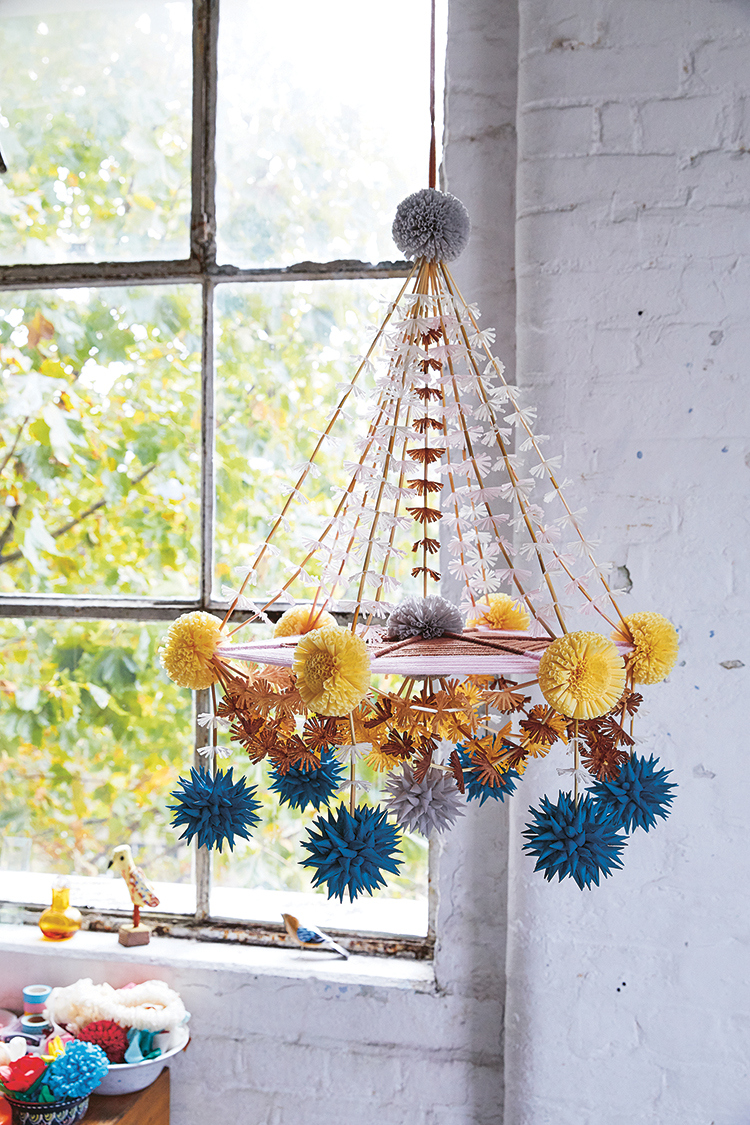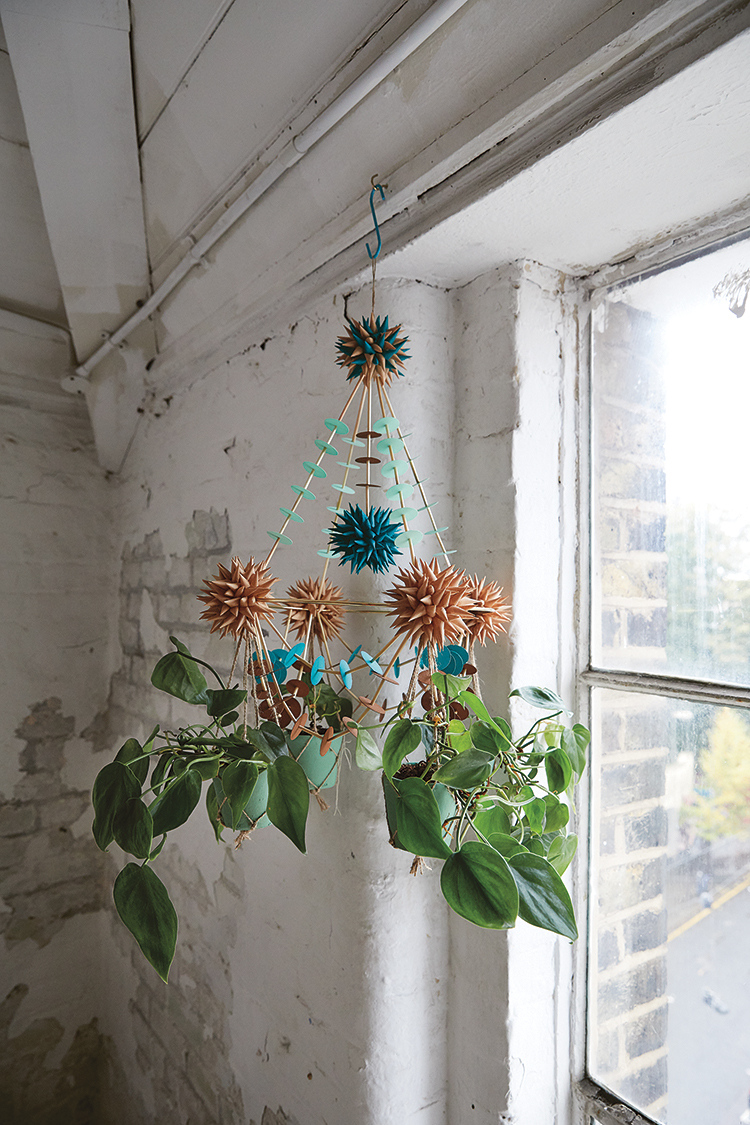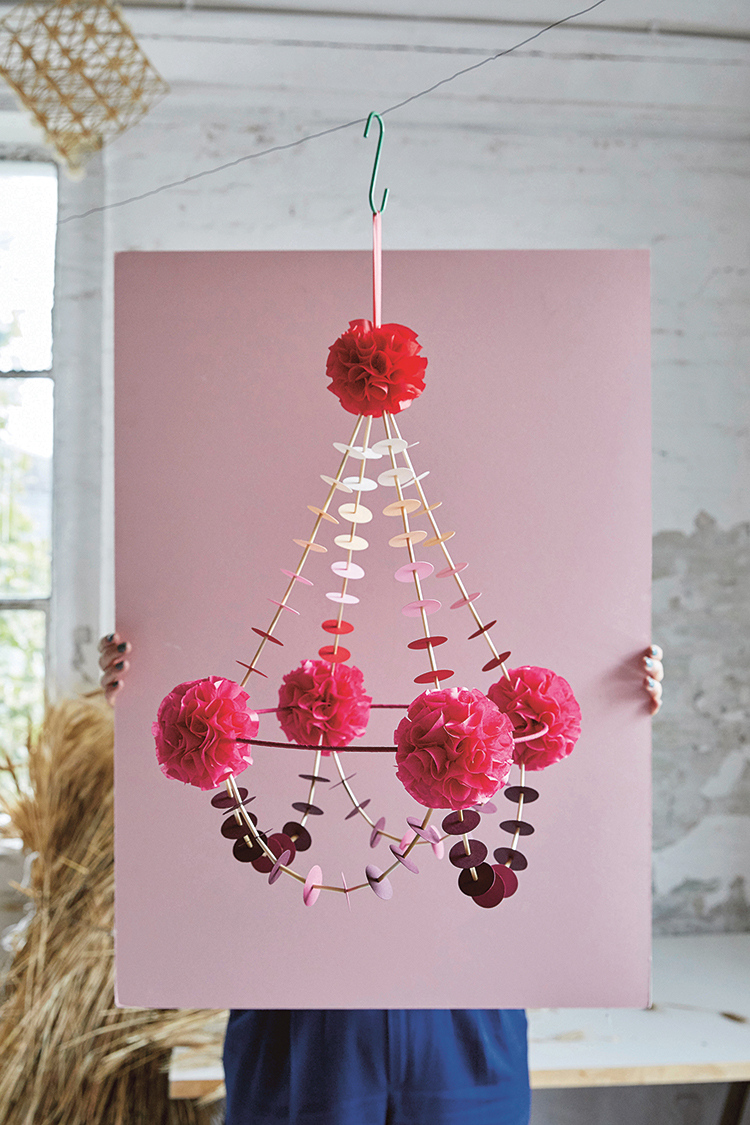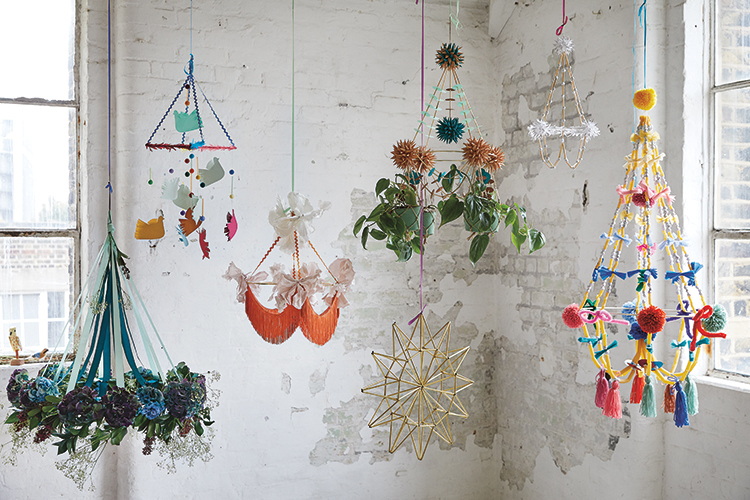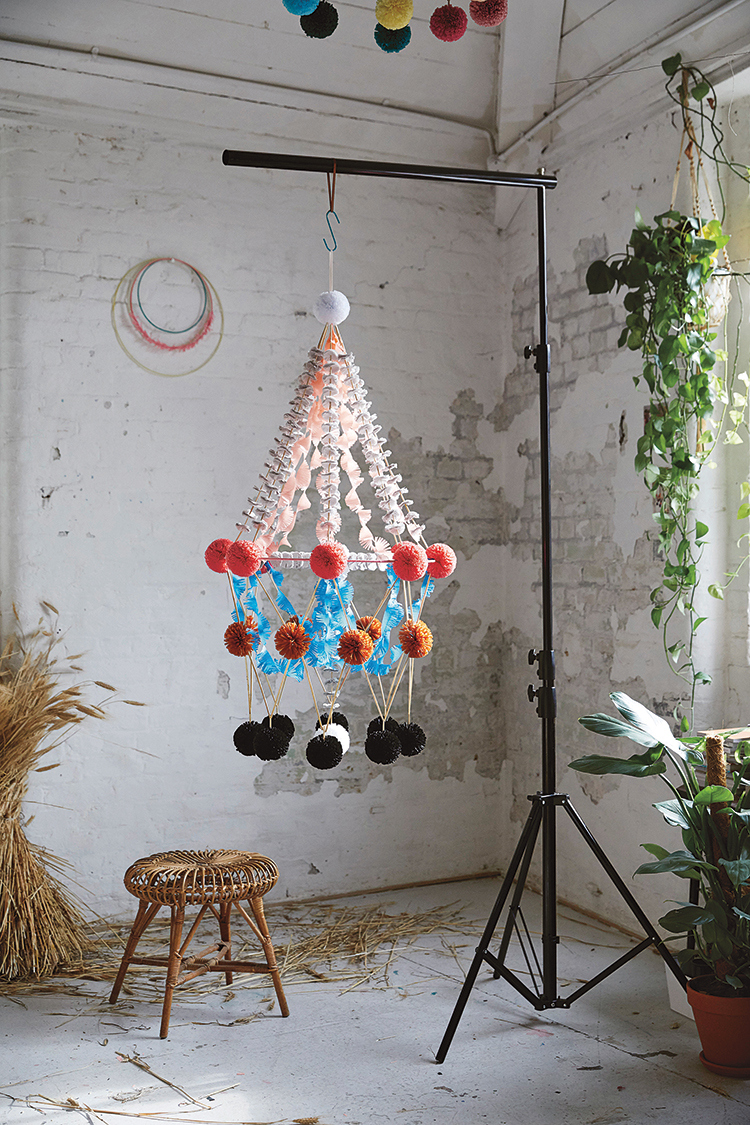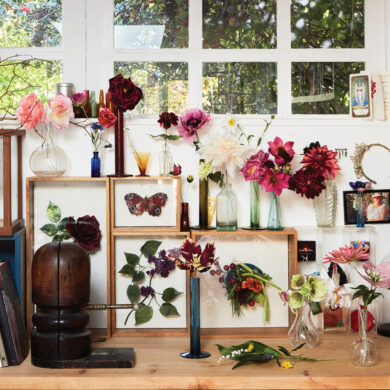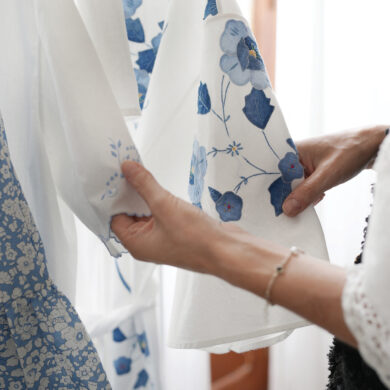My Search for Mobiles
Steeped in history and symbolism, Polish mobiles are enchanting folk decorations, traditionally made from straw, paper, wood, feathers, and dried peas. Variations can be found all over Eastern Europe, and even in Scandinavia, but none are as bright or colourful as the Polish ones.
Back home these mobiles are called pająk (pronounced “pah-yonk”) or pająki (the plural). Delicate and light, these chandeliers would often hang from ceilings around wintertime, spinning gently when a stray draft would breeze through the home. Unfortunately, their origin and full history is difficult to uncover, as not many original early designs survive today.
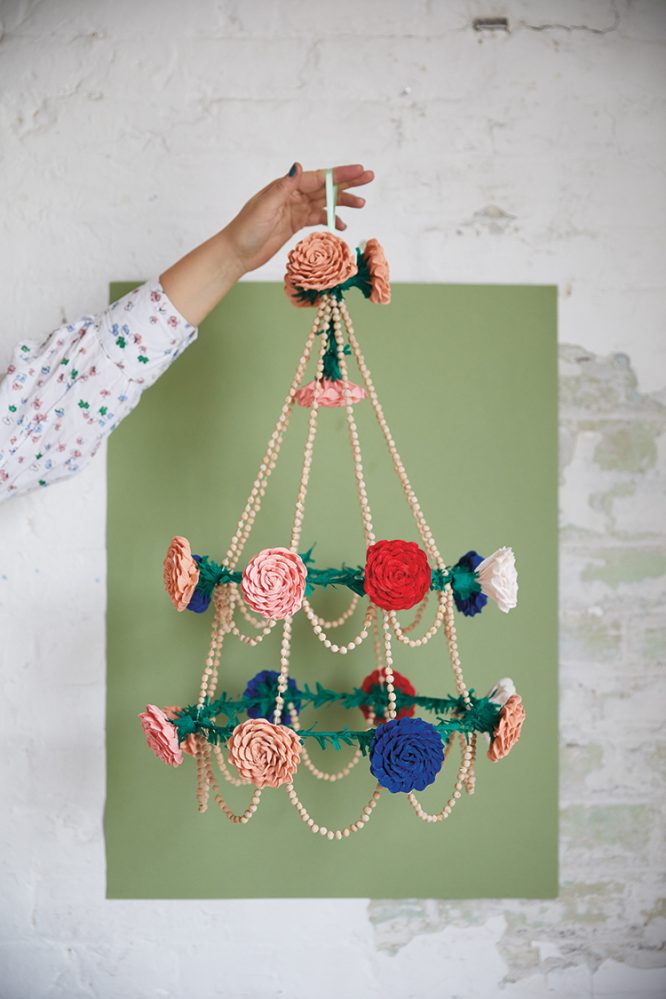
It is important to understand the basic structure of the pająk. A pająk is always made of the same basic elements, so bear this in mind when designing your own. Before I start to build a pająk, I always start by sketching it out. It helps me to visualize and to finesse the design.
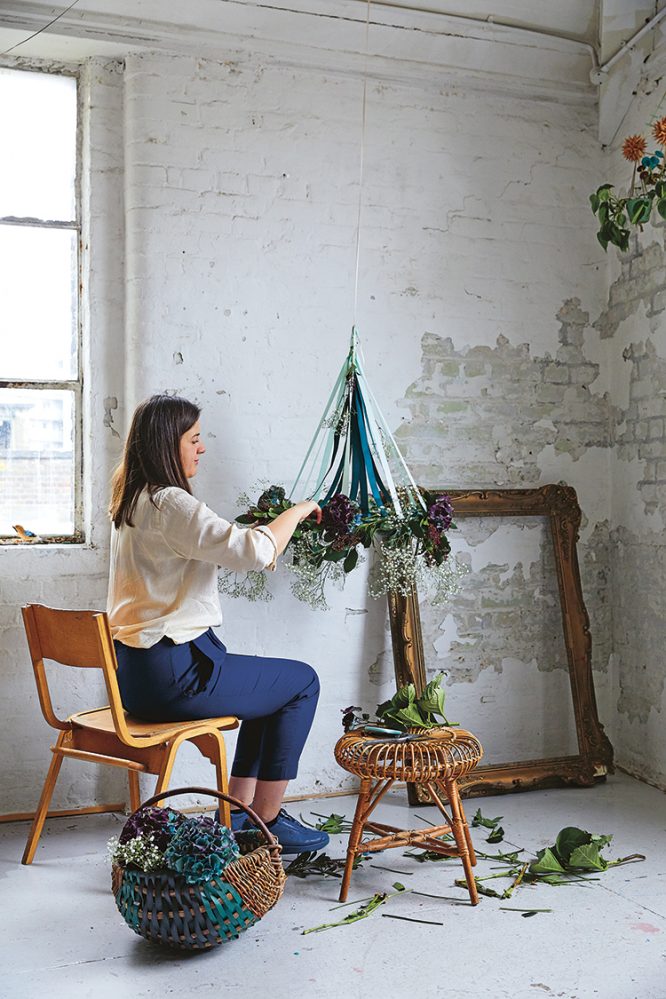
“My search for mobiles is steeped in history and symbolism … their scarcity drives my passion to keep the pająki tradition alive.”
My own story with mobiles starts in an Open Air Village Museum in Lublin, Poland, where I first saw pająki hanging in one of the traditional village houses. Then, years later, while studying History of Art at the Jagiellonian University in Krakow, in addition to my studies on medieval and modern art, I developed an interest in the ethnography and history of traditional Polish folk culture. It has now become an obsession—I even called my own art and interiors shop, in London, Folka—which is a portmanteau of Polka (Polish girl) and “folk.”
I am so excited I can share this book with you. I will teach you different types of pająki—traditional, as well as contemporary ones—to show you the wealth of different designs you can create. Another very important part of the book for me is to present to you three lovely artists and their stories: Helena, Zofia, and Józef.
Combining history, heritage, time-honoured techniques and bright modern designs, you will fall in love with making mobiles!
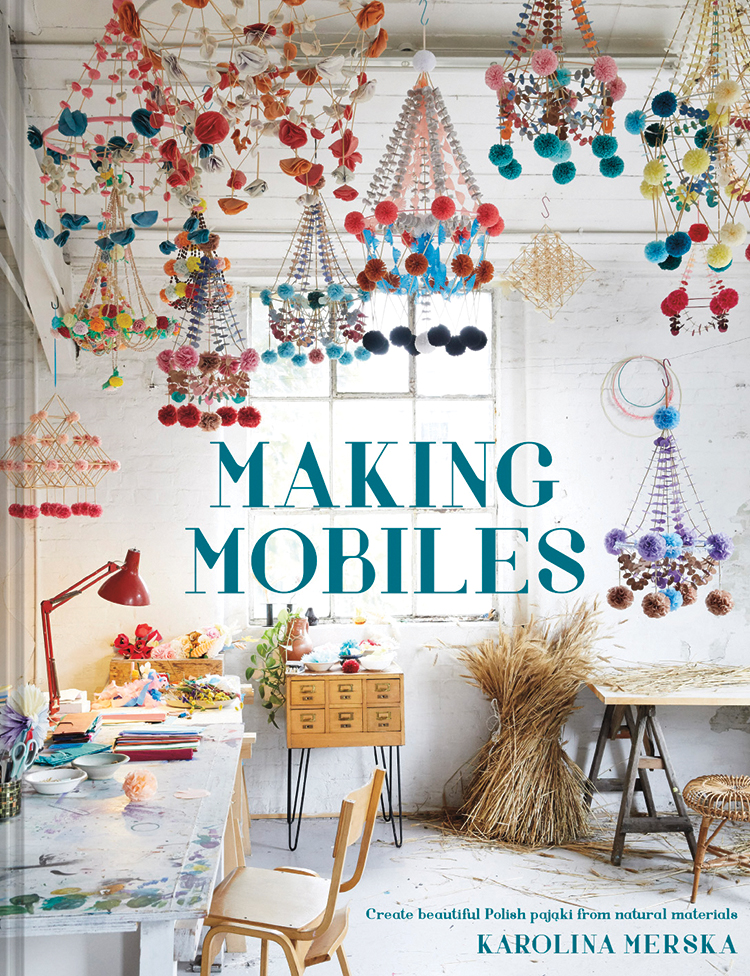
My Search for Mobiles
Steeped in history and symbolism, Polish mobiles are enchanting folk decorations, traditionally made from straw, paper, wood, feathers, and dried peas. Variations can be found all over Eastern Europe, and even in Scandinavia, but none are as bright or colourful as the Polish ones.
Back home these mobiles are called pająk (pronounced “pah-yonk”) or pająki (the plural). Delicate and light, these chandeliers would often hang from ceilings around wintertime, spinning gently when a stray draft would breeze through the home. Unfortunately, their origin and full history is difficult to uncover, as not many original early designs survive today.

It is important to understand the basic structure of the pająk. A pająk is always made of the same basic elements, so bear this in mind when designing your own. Before I start to build a pająk, I always start by sketching it out. It helps me to visualize and to finesse the design.

“My search for mobiles is steeped in history and symbolism … their scarcity drives my passion to keep the pająki tradition alive.”
My own story with mobiles starts in an Open Air Village Museum in Lublin, Poland, where I first saw pająki hanging in one of the traditional village houses. Then, years later, while studying History of Art at the Jagiellonian University in Krakow, in addition to my studies on medieval and modern art, I developed an interest in the ethnography and history of traditional Polish folk culture. It has now become an obsession—I even called my own art and interiors shop, in London, Folka—which is a portmanteau of Polka (Polish girl) and “folk.”
I am so excited I can share this book with you. I will teach you different types of pająki—traditional, as well as contemporary ones—to show you the wealth of different designs you can create. Another very important part of the book for me is to present to you three lovely artists and their stories: Helena, Zofia, and Józef.
Combining history, heritage, time-honoured techniques and bright modern designs, you will fall in love with making mobiles!





